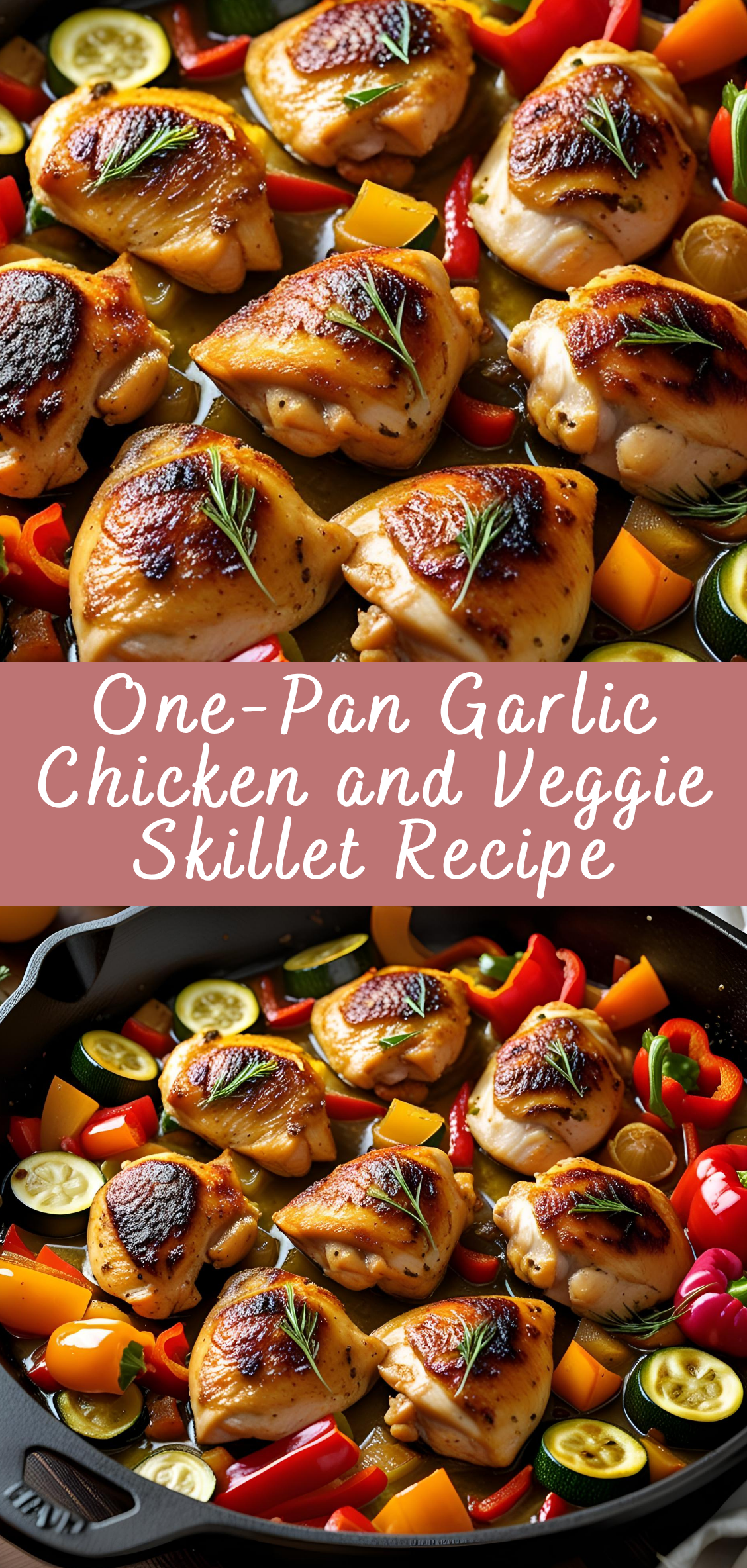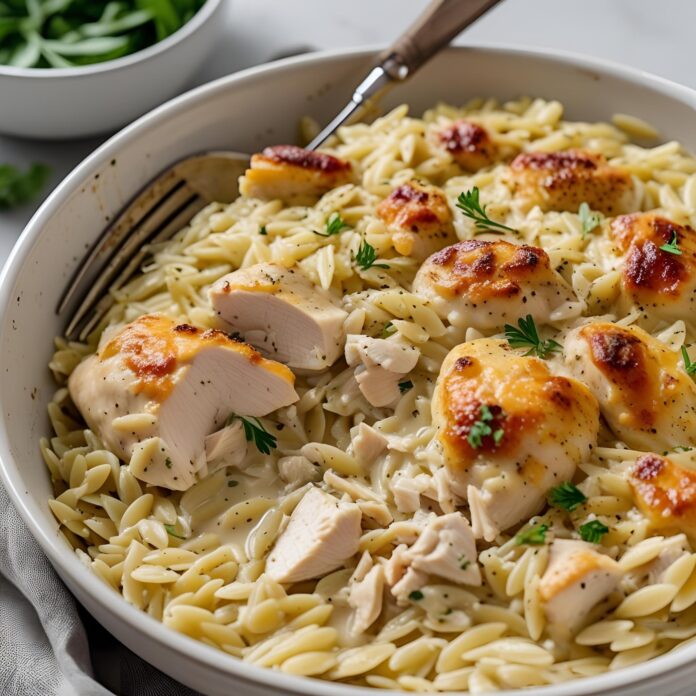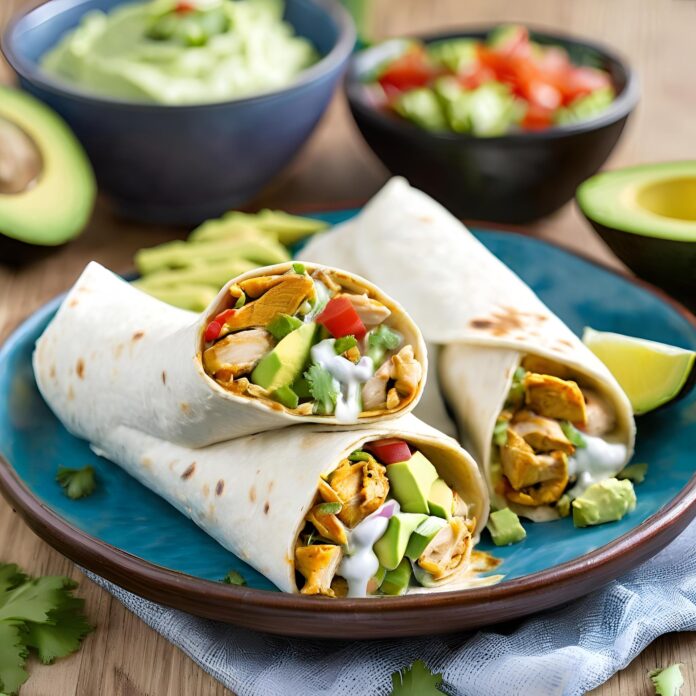One-Pan Garlic Chicken and Veggie Skillet Recipe
In a world where our days often blur into a rush of responsibilities, there’s something profoundly grounding about gathering around a home-cooked meal. Yet, the demand for convenience has never been higher. Enter the One-Pan Garlic Chicken and Veggie Skillet—a dish that offers the ultimate balance between nutrition, efficiency, and flavor.
At first glance, it’s deceptively simple: golden-seared chicken, vibrant seasonal vegetables, and the rich, aromatic allure of garlic, all nestled together in a single skillet. But this dish is more than the sum of its parts. It’s a celebration of balance—of savory and sweet, of soft and crisp textures, and of indulgence that doesn’t compromise health.
One-pan meals have seen a surge in popularity in recent years, and for good reason. The concept appeals to novice cooks and culinary experts alike: fewer dishes, faster cleanup, and an integrated cooking process where every ingredient gets a chance to shine. But while many one-pan meals are designed for speed over satisfaction, the Garlic Chicken and Veggie Skillet manages to do both, delivering layers of flavor with minimal fuss.
What elevates this dish beyond basic is its flexibility. Whether you’re cooking with chicken breasts, thighs, or drumsticks; using broccoli, bell peppers, carrots, or snap peas—this meal adapts to your pantry and preferences. It can be Mediterranean one night, Asian-inspired the next, or made low-carb or dairy-free with just a few tweaks.
Garlic, the undeniable star of this dish, brings more than just taste. Revered across global cuisines, garlic adds depth, warmth, and a sense of rustic authenticity. When sautéed in olive oil or butter, it forms a savory foundation that brings out the best in both the protein and vegetables. Combined with fresh herbs, a splash of lemon, or a sprinkle of chili flakes, the dish becomes endlessly customizable.
Over the course of this in-depth recipe guide, we’ll explore everything you need to know about making a perfect One-Pan Garlic Chicken and Veggie Skillet. We’ll look at the cultural roots and culinary science behind one-skillet cooking, break down the ingredient selection with substitutions, delve into step-by-step techniques, and provide expert tips to avoid common pitfalls. Whether you’re looking to meal prep for the week, impress guests with a quick gourmet meal, or simply put dinner on the table in under an hour, this guide will empower you with both the recipe and the reasoning behind every decision.
By the end of this article, you won’t just have a recipe—you’ll have a foundational dish that can be reinvented countless ways, tailored to any season or craving. Because sometimes, the best meals come from the simplest methods, and the humble skillet can be the canvas for true culinary creativity.
Origins and Cultural Context: The Global Story Behind One-Pan Meals
While the One-Pan Garlic Chicken and Veggie Skillet might feel like a modern answer to busy lives and hectic schedules, the truth is that one-pan cooking has been a hallmark of traditional kitchens for centuries. Across cultures, continents, and time periods, the idea of cooking an entire meal in a single vessel has remained a universal solution for maximizing flavor while minimizing effort.
The Ancient Roots of Skillet and Pan Cooking
One-pan meals have ancient origins, long before stainless steel cookware or non-stick surfaces became staples in modern homes. In ancient civilizations, cooking was done over open flames, and large, wide pans or cauldrons were used to prepare hearty, communal meals. These early versions of skillet cooking were about efficiency, using a single vessel to combine protein, grains, and vegetables in one nourishing, shareable dish.
In the Mediterranean, for example, the tradition of preparing meals in a single pot goes back thousands of years. Roman soldiers on the move often prepared rustic, one-pot stews combining dried legumes, meat, and herbs over campfires. Similarly, in North Africa, the tagine—both the name of the conical clay pot and the dish it produces—remains a classic method of one-pot cooking, infusing meat and vegetables with spice-laden sauces.
Cultural Variations Around the World
Every culinary tradition has its own take on one-pan meals:
-
Spain: The iconic paella is a one-pan wonder. Rice, seafood or meat, vegetables, and saffron are cooked together in a wide, shallow pan over flame, allowing flavors to concentrate and textures to harmonize.
-
China: Stir-fries are perhaps the most famous form of one-pan cooking in Asia. A hot wok sears vegetables and proteins quickly, preserving their flavor and texture while requiring minimal oil and time.
-
India: Curries often begin in a single kadai or deep pan, layering aromatics like garlic, ginger, and onions with spices and then adding chicken or vegetables to simmer into a cohesive dish.
-
France: Dishes like coq au vin or cassoulet are stewed slowly in a single pot, merging wine, aromatics, and protein into something more than the sum of its parts.
-
The American South: Cast-iron skillet dishes are staples in Southern U.S. kitchens, from fried chicken with vegetables to cornbread-topped casseroles. The cast-iron skillet became more than a tool—it became a generational heirloom.
What these global variations share is a commitment to depth of flavor, balance of texture, and simplicity in execution.
The Rise of the Modern Skillet Meal
Fast forward to the 20th and 21st centuries, and the one-pan concept was rediscovered by the modern home cook—not out of scarcity, but out of practicality. Post-war convenience culture in the 1950s and 60s brought casseroles and skillet dinners into American homes with gusto. Cookbooks from that era are filled with recipes for dishes like “Skillet Chicken à la King” and “One-Pot Beef Stroganoff.” Many relied on canned soups and shelf-stable ingredients, prioritizing speed over scratch cooking.
In contrast, today’s one-pan meals embrace both convenience and freshness. The trend of whole food cooking, the growing popularity of Mediterranean diets, and the resurgence of cast-iron cooking have all played a role in revitalizing this tradition. The Garlic Chicken and Veggie Skillet reflects this new wave: fresh garlic, lean chicken, and colorful vegetables coming together in a way that feels clean, wholesome, and deeply flavorful—without sacrificing ease.
Garlic: A Shared Heritage Ingredient
Garlic itself has been used in nearly every world cuisine, often as the foundational aromatic in one-pan meals. Whether it’s the base for a French mirepoix, a Chinese ginger-garlic sauté, or a Mediterranean sofrito, garlic brings a depth of flavor that transforms basic ingredients into something exceptional.
It’s no accident that garlic is front and center in this recipe. Its pungent aroma, which mellows to a sweet savoriness when sautéed, creates the flavor base upon which the rest of the skillet builds. Used correctly, garlic bridges cultures, enhancing every element in the dish without overpowering.
Why One-Pan Garlic Chicken and Veggie Skillet Works Today
In the context of modern life, the resurgence of one-pan cooking answers several needs at once: it’s healthier, often cheaper, more environmentally conscious (fewer dishes = less water), and highly adaptable. The Garlic Chicken and Veggie Skillet becomes not just a dish, but a philosophy: keep it simple, let ingredients shine, and let the cooking process do the heavy lifting.
It’s a dish rooted in thousands of years of culinary tradition, reinvented for today’s lifestyle. And just like its ancestors in paella pans, clay tagines, and iron skillets, it remains a symbol of connection—between ingredients, flavors, and the people we cook for.
One-Pan Garlic Chicken and Veggie Skillet Recipe
In a world where our days often blur into a rush of responsibilities, there’s something profoundly grounding about gathering around a home-cooked meal. Yet, the demand for convenience has never been higher. Enter the One-Pan Garlic Chicken and Veggie Skillet—a dish that offers the ultimate balance between nutrition, efficiency, and flavor.
Ingredients
- 2 tablespoons olive oil
- 1 pound boneless, skinless chicken breast or thighs, cut into bite-sized pieces
- Salt and pepper, to taste
- 1 teaspoon paprika
- 1 teaspoon Italian seasoning
- 4 cloves garlic, minced
- 1 medium zucchini, chopped
- 1 red bell pepper, chopped
- 1 yellow bell pepper, chopped
- 1 cup cherry tomatoes, halved
- 1 tablespoon fresh lemon juice (optional)
- 2 tablespoons chopped fresh parsley (for garnish)
- Grated Parmesan cheese, for serving (optional)
Instructions
- Season and cook the chicken:
In a large skillet over medium heat, heat 1 tablespoon olive oil. Season chicken with salt, pepper, paprika, and Italian seasoning. Add to the skillet and cook 5–7 minutes until golden and cooked through. Remove chicken from the skillet and set aside. - Sauté the garlic and veggies:
Add the remaining tablespoon of olive oil to the same skillet. Add garlic and cook for 30 seconds. Then add zucchini, bell peppers, and cherry tomatoes. Season with a pinch of salt and pepper. Sauté for 5–7 minutes, or until vegetables are tender but still slightly crisp. - Combine and finish:
Return chicken to the skillet and stir to combine. Cook for another 2–3 minutes to heat everything through. If using, add lemon juice for brightness. - Garnish and serve:
Sprinkle with chopped parsley and optional Parmesan cheese before serving.
Notes
- Vegetable swaps: Use broccoli, green beans, mushrooms, or asparagus based on what you have.
- Add carbs: Serve over cooked rice, quinoa, couscous, or pasta for a complete meal.
- Make it spicy: Add red pepper flakes or a dash of hot sauce for heat.


